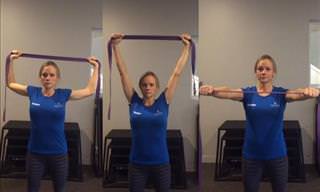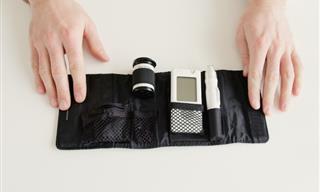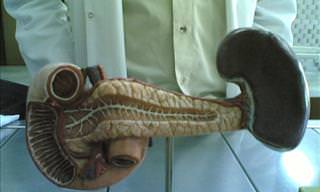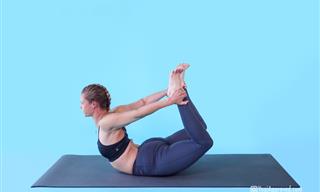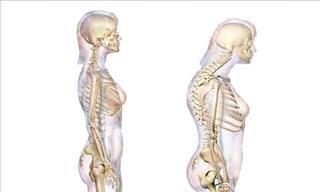Many of us suffer from a hump, or by its official name "Kyphosis", as we approach advanced and older ages. Of all the types of posture problems in the upper back, Dowager’s hump is the most common and exists in both adults and young adults.
If you suffer from such a hump and don’t treat it properly, you may suffer from poor posture that will only worsen later and cause fractures in the vertebrae in old age, but happily, there is something you can do about it. We’ll introduce you to the 7 tips that will help you get rid of your hump once and for all.
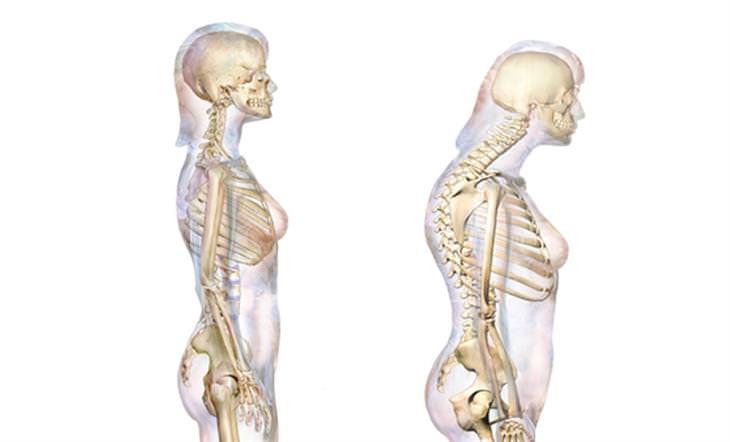
What is Postural Kyphosis?
Postural kyphosis, also called "Dowager’s hump,” usually occurs from slouching. This problem may occur at any age and is caused by an imbalance in the muscles of the back, like many other problems that affect this region. Postural kyphosis causes shoulders to slacken and the neck to tilt forward, so it occurs only in the upper back. If you want to avoid this problem in advance, you may want to know how to maintain proper posture, but if you are already suffering from the problem we have some useful tips for you. Note that if you suffer from postural kyphosis at an older age, you should first consult your doctor before doing some of the exercises in this article to ensure that you don’t cause further damage to your vertebrae if they are too weak.
1. Change your sleeping positions
When you sleep, you should keep your spine in a position that is reminiscent of the right posture - the shoulders in their natural position, back straight, knees relaxed and hips parallel to the shoulders. To achieve this position, sleep in the following ways:
- If you sleep on your back, you do not need a pillow under your head, but under your neck. Place a round pillow under your neck when you sleep.
- If you sleep on your side, place a pillow between your knees, and another between your shoulders and head, in the neck area (preferably circular pillow) - in addition to the pillow on which your head rests.
2. Improve your posture
When your neck is leaning forward, you add about 5 pounds of weight that your neck now needs to carry, which is why you need to make a conscious effort and improve your posture daily with the following tips:
- To correct your posture while walking, start by standing upright and try to look as tall as possible. Keep your chin parallel to the ground, your shoulders stretched back and your stomach pulled inwards. Let your arms fall naturally to your sides, and imagine that there is a string pulling you up. Think of the same imaginary string every time you need to change your posture to a more correct one.
- To correct your sitting posture, first, you should check whether the chair you’re sitting on helps support your neck and back or if it is uncomfortable. You should make sure that your knees are lower than your thighs and not parallel to them. To make sure of this, it might help to raise the height of your chair or sit on a pillow.

3. Watch your weight
Excess weight is one of the main causes of postural kyphosis, and sometimes it is even the fat itself that causes the hump - the more your body weight increases, the more pressure is placed on your spine. Changing your diet does not have to be extreme, because even though the condition worsens over time, it also gets cured over time. So you can start by cutting out soft drinks opting for water instead. Click here for more tips to improve your eating habits.
4. Release your suboccipital muscles
The base muscles of the posterior skull are located at the top of the neck and are responsible for pulling your head to that incorrect forward tilting position. To release the muscles from this position, you should perform the following exercise:
- First, find the trigger spots – you’re looking for the indent just above the nape of your neck.
- Lie on your back and place a tennis ball on the target area.
- Lightly move your head from side to side to release your muscles.
- Do this for a minute to a minute and a half, on both sides of the head.

5. Stretch your neck muscles
Stretching these muscles helps prevent a condition of poor neck stability and helps to improve the posture of the muscles in the area. Do the following daily stretching:
- Tilt your head to the right until you feel a stretch on the left side of the neck.
- Place your right hand on your head and pull lightly to extend the stretch.
- Stay in this position for 30 seconds.
- Repeat the stretch 3 times on each side.
6. Perform self-massage
If you suffer from postural kyphosis, your neck muscles are likely to be over-tense. You can release them using the following self-massage technique:
- Take a towel and twist it so that it forms a thick braid so that it’s stiff and long.
- Place the towel on your shoulders and hold the ends with your hands.
- Move the towel up and down to loosen the neck muscles.
- Perform this massage for 5-7 minutes.
7. Train your back and spine muscles to support you well
Experts point out that training upper body muscles, especially neck and shoulder muscles, helps to get rid of postural kyphosis by increasing muscle mass in the area. You can use the following video, in which Dr. Mike Brett will show you 3 exercises that help straighten your back by affecting the spinal nerves, and you should also try the following exercise:
- Place your hands on the back of your head and press your head slightly forward. At the same time, resist with your head and push your hands back with your neck muscles.
- Stay in this position for 5 seconds and release.
- Repeat the exercise 10 times.
 Go to BabaMail
Go to BabaMail








